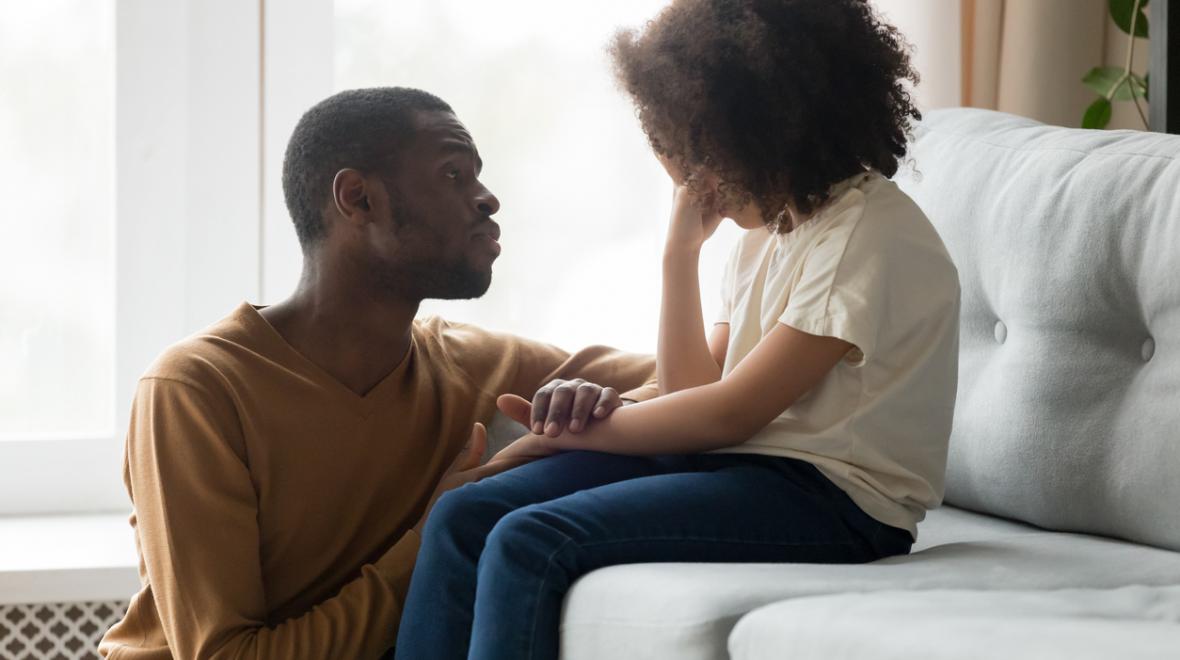
The pandemic has been difficult for many of us, especially for children and teens. Not only are children grappling with the challenges that naturally occur during formative years, but the weight of recent events has exacerbated mental health issues. At alarming rates, youth are reporting feelings of depression and anxiety.
Anxiety and fear are normal feelings. They are our body’s natural alarm system, alerting us to potential danger or harm. It’s okay to have these feelings. But for many children and teens, anxious thoughts and feelings escalate to the point where they interfere with day-to-day activities like school or play.
This excerpted post was originally published on the Seattle Children’s On the Pulse blog.

“The good news is that there are many things parents can do at home to help children cope effectively with anxiety, says Dr. Kendra Read, who leads the Mood and Anxiety Program at Seattle Children’s. “Think of anxiety like a smoke alarm. Every building built to code has a smoke alarm. It’s not our goal to get rid of it.”
The body’s natural alarm system can be incredibly helpful in alerting us to danger.
“But alarms can go off when there is no fire,” Read said. “If we keep immediately evacuating the building as soon as we hear the alarm, then we don’t realize when it goes off and there was no danger. Let’s look around us first. Is there smoke? We’re not taking the alarm out of the building. We’re recalibrating how we assess the situation.”
Avoid accommodating
According to Read, a common mistake many caregivers make is accommodating. Accommodating means helping kids avoid normal, safe situations or things they are afraid of when they feel anxious. It’s hard to see a child get anxious, but over time, accommodating keeps children from learning their fears are unlikely to come true, or that they can handle anxious feelings.
We want children to learn they can handle their anxious feelings. “We’re not getting rid of anxiety,” Read said. “We’re helping children learn they can handle situations and face fear.”
Practice facing fears
Seattle Children’s Anxiety and Obsessive Compulsive Disorder (OCD) Program is a stepped-care program that provides short-term, problem-focused and evidence-based care for anxiety disorders and OCD. The first step of care is a weekly group series, which is a 9-week group program. When patients and families struggling with anxiety and OCD go through group-based therapy at Seattle Children’s, one of the first things they do is make a list of all the things they are afraid of.
“You name it, we’ve seen it,” Read said.
From social anxiety to catastrophic thoughts about the end of the world, Read and her team help children and caregivers face their fears through exposure treatment, by putting them in situations that feel real.
Read shared how she has helped her own young child with facing fear at home using the same techniques she uses with patients. When her daughter was afraid of the drain in the bathtub, instead of picking her up immediately and consoling her, she helped explain to her daughter what a drain is and how it works. Her daughter was afraid she would be sucked down the pipe, so Read slowly helped her through her anxiety by modeling behavior.
“I put my hand on the drain and showed her it was safe,” she said. “Then, we did it together. We both touched the drain.”
She also validated her daughter’s feelings by telling her she feels anxiety sometimes, too.
“One of the most important things we can do is face our fears when there is no objective threat,” Read said.
Strategies for supporting your child or teen with anxiety
Use these tips to help your child prepare for and face the anxious feelings they experience when they are in safe situations:
- Model healthy coping by talking to your child about how you feel when you’re anxious and what actions you take to overcome fear and anxiety.
- Help your child create a plan for coping with anxiety, including noticing when it starts.
- Have your child face their fear and avoid rescuing them or accommodating them.
- Avoid giving too much reassurance so your child can learn to deal with uncertainty.
- Praise and reward your child when they face their fear.
- Validate how your child is feeling.
- Stay supportive and never yell at or tease your child when they’re anxious.
- Give your child the space and independence to handle hard situations.
Another tip is to “Name your anxiety and talk back to it. Tell it, ‘You’re not the boss of me.’ It loses its power when you talk back to it, and you realize it’s a bully bossing you around,” said Read.
“These are tips you can integrate into daily life, but if you are having a hard time, we want parents to get the support they need,” Read said. “Parents carry so much guilt when their child feels anxious, but it is changeable. I see it all the time.”
Helping families find careIf your child is experiencing mental health issues, it can feel overwhelming, but help is available. Start by contacting your child’s doctor. These resources can help you learn more about anxiety and about helping your child cope. You’ll also find parenting tools, tips for getting mental health care and services, and more:
|











